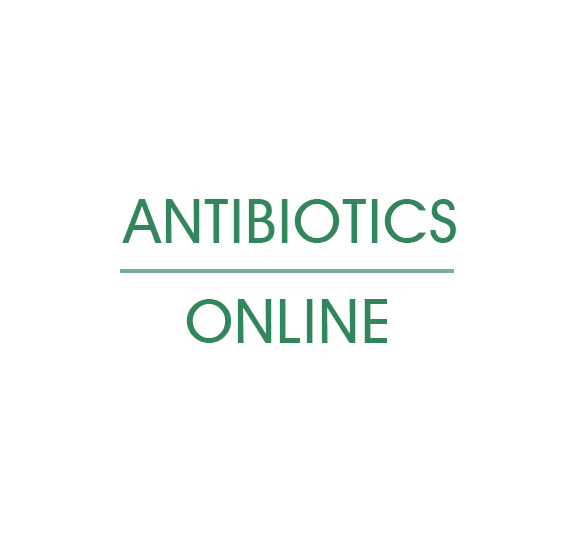Families of Antibiotics
These are the oldest antibiotics. Penicillins are divided into several categories according to their spectrum of activity: type G penicillins are active on a smaller variety of germs than type A penicillins (amoxicillin, ampicillin). Amoxicillin is sometimes combined with clavulanic acid to prevent its destruction by certain bacteria. These antibiotics are widely used in general medicine, particularly to treat infections of the lungs, bronchi, nose, throat or ears, digestive or urinary tract, genital tract, gums and teeth. They can be used by pregnant or breast-feeding women. Their adverse effects are limited. They can, however, be responsible for allergic reactions, which can sometimes be serious. A history of allergic reaction to a penicillin contraindicates the re-use of a drug from the same family. List of penicillin antibiotics: A-Gram, Amodex, Generic Amoxicillin, Bristopen, Clamoxyl, Extencillin, Oracillin, Orbenin List of penicillins with a beta-lactamase inhibitor: Generic Amoxicillin Clavulanic Acid, Augmentin, Unacim.

Beta-lactam antibiotics: cephalosporins
These are antibiotics closely related to penicillins (they have a similar mechanism of action). They are divided into three groups known as 1st, 2nd and 3rd generation. They are used orally to treat a wide range of infectious diseases, particularly of the lungs, bronchi, sinuses, throat, ears and urinary tract. Injectable cephalosporins are mainly reserved for use in hospitals. They can generally be used during pregnancy or when breast-feeding. Cephalosporins can cause allergies, particularly in people allergic to penicillins. List of cephalosporin class antibiotics: Alfatil, Cefacet, Cefaclor, Cefadroxil, Cefatrizine, Cefixime, Cefpodoxime, Ceftriaxone, Cefuroxime, Dexef, Haxifal, Keforal, Oracefal, Orelox, Oroken, Rocephine IM, Rocephine IV, Taketiam, Texodil, Triacefan IM, Zinnat.
Cyclins
These antibiotics inhibit bacterial protein synthesis. Cyclins are active against various germs, such as chlamydia and mycoplasma, particular bacteria that multiply only inside cells. These antibiotics are indicated for various infectious diseases, particularly respiratory and genital, and for the treatment of acne (often for several months). They should not be used from the 4th month of pregnancy or in children under the age of eight, due to the risk of tooth discolouration. Cyclins should not be combined with oral acne treatments of the retinoid family. Cyclins are photosensitising: sun exposure should be avoided during treatment. List of cyclin class antibiotics: Doxy, Generic Doxycycline, Doxylis, Granudoxy, Lysocline, Mestacine, Generic Minocycline, Minolis, Mynocine, Physiomycin, Spanor, Tetralysal, Tolexine, Vibramycin.
Macrolides
These antibiotics are active against certain gram-positive bacteria. They are indicated for infections of the nose, throat and ears (particularly when penicillins cannot be used), as well as infections of the bronchi and lungs, skin, genitals and mouth. Some macrolides, particularly erythromycin, carry a risk of drug interactions with many commonly used medicines. Some macrolides may be used during pregnancy. Their adverse effects are mainly digestive. List of macrolide antibiotics alone: Abboticin, Azadose, Azithromycin, Claramid, Clarithromycin, Egery, Ery, Erythrocine, Josacine, Mononaxy, Monozeclar, Mosil, Naxy, Ordipha, Rovamycine, Roxithromycine Generiques, Rulid, Spiramycine Generiques, Subroxine, Zeclar, Zithromax, Zithromax Monodose, List of imidazole-associated macrolide antibiotics : Bi Missilor, Birodogyl, Missilor, Rodogyl, Spiramycin Metronidazole, List of antibiotics containing substances related to macrolides: Dalacin, Ketek, Lincocin, Pyostacin.
Quinolones
Quinolones may be indicated for a variety of infectious diseases (genital, urinary, intestinal, nose and throat infections). They are often used in cases of acute bladder infection (cystitis): a single dose (single-dose treatment) or three-day treatment (short course) is usually sufficient. Quinolones are generally not recommended during pregnancy and are contraindicated during breast-feeding (because they pass into breast milk). These antibiotics are not generally used in children (except as injections). Exposure to ultraviolet rays (sunlight or UV lamps) during treatment with quinolones exposes patients to the risk of photosensitisation. Quinolones are generally well tolerated. However, they can sometimes cause tendonitis. In the event of suspicious-looking pain occurring without any particular effort, contact your doctor before continuing treatment. The occurrence of tendonitis during treatment with a quinolone antibiotic contraindicates further use. List of quinolone antibiotics: Apurone, Ciflox, Ciprofloxacin Generics, Decalogiflox, Enoxor, Izilox, Logiflox, Monoflocet, Norfloxacin, Noroxin, Oflocet, Ofloxacin, Peflacine, Peflacine Monodose, Pipram Fort, Tavanic, Uniflox.
Aminoglycosides
These antibiotics are active against gram-positive bacteria, particularly staphylococci. They practically do not pass through the wall of the intestine and are therefore administered by injection. They are indicated for the treatment of various infectious diseases, particularly urinary and renal diseases, as they are eliminated in active form by the kidneys. Antibiotics in this family can be toxic to the inner ear or kidneys. These effects have been observed above all in the case of excessively high doses or pre-existing renal insufficiency. List of aminoglycoside antibiotics: Gentalline, Nebcine, Netromicin, Tobi, Trobicin.
Other antibiotics
The other antibiotic families have few representatives. For information on their indications and effects, it is advisable to refer directly to their package leaflets. Fucidic acid: Fucidine Phenicolates: Thiophenicol Polymyxins: Colimycin Sulphonamides: Adiazine Sulphonamides associated with trimethoprim: Bactrim, Cotrimoxazole Generics Anti-leprosy antibiotics: Disulone Urinary antibiotics: Furadantin, Furadoin, Microdoin, Rufol, Selexid, Uridoz Tuberculosis drugs: Ansatipine, Dexambutol, Myambutol, Pirilene, Rifadine, Rimactan, Rimifon.

